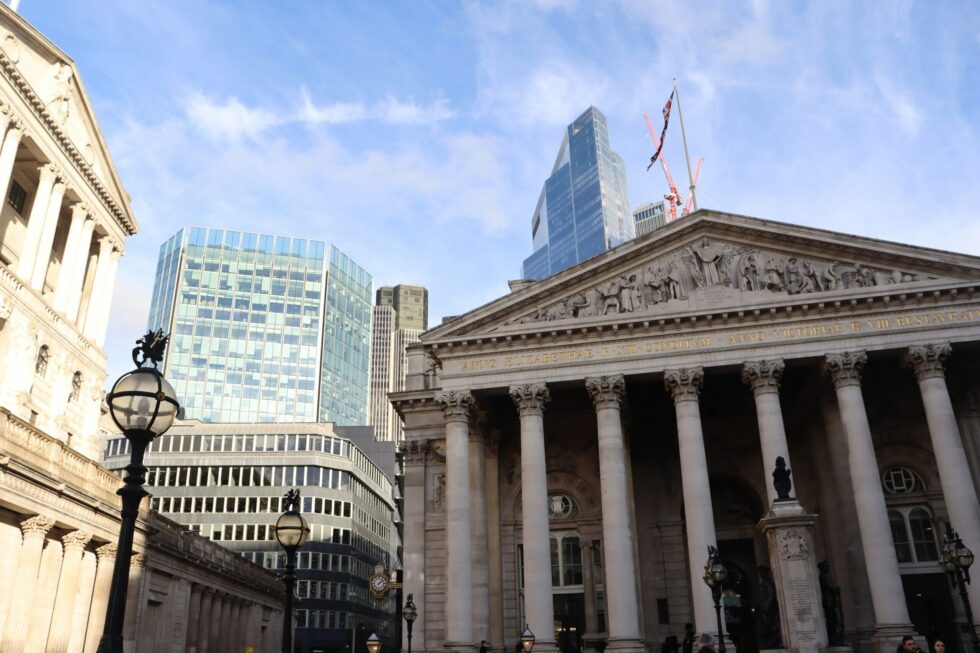
As of today, the Bank of England cut Bank Rate from 4.5 % to 4.25 %. According to the May Monetary Policy Summary, five committee members felt a modest trim was safe because price growth slowed to 2.6% and wholesale energy costs fell.
Minutes show output cooled through late 2024 and hiring slackened, which lowered pressure on wages. Two members wanted an even deeper cut to 4%, arguing that tight money risked choking demand, while two preferred to leave the rate unchanged until wage growth eased further.
The committee stressed that policy is not on a set track. Every 6 weeks members will examine fresh figures on prices, output and jobs before acting again.
How Does The New Rate Affect Daily Business Expenses?
Most overdrafts, invoice-finance lines and asset leases track Bank Rate. According to the Bank’s explainer “Why are interest rates high and how quickly might they fall?”, a lower benchmark feeds into commercial contracts within weeks, shaving interest bills and lifting spare cash for stock, wages and energy.
A quarter difference may look small, but on a £1 million working-capital loan the yearly saving can top £2 500. That room to manoeuvre matters after three years of rising charges cut into thin margins.
Lower servicing costs also improve affordability tests on fresh borrowing. Banks price loans off the base plus a margin; when the base falls, hurdle rates ease, so more projects clear internal gates.
Deposit returns will soften at the same time, but for growing firms the gain from cheaper credit usually outweighs the lost interest on idle funds.
Will The Cut Bring New Hiring And Investment?
Bank staff expect regular pay growth to drift toward 3.75 % by late 2025. If that slowing coincides with less expensive finance, payroll plans could thaw because the combined cost of labour and capital stops increasing together.
Sectors selling discretionary goods may benefit if lower mortgage and loan payments leave households with extra spending money. Export-heavy firms still face tariff worries in the United States, yet slimmer debt charges at home can offset weaker overseas orders.
Minutes also flag an opening for refurbishment and tech upgrades that were shelved when money was dearer. Managers who move quickly may capture market share before rivals arrange funding.
What Do Experts Say?
Our Experts:
- Hamish Martin, Partner, LAVA Advisory Partners
- Paul Noble, CEO, Chetwood Bank
Bradley Post, MD, RIFT - Stephanie Daley, Director of Partnerships, Alexander Hall
- Jean Jameson, Chief Sales Officer, Foxtons
- Thomas Cantor, Co-Head of Short-Term Finance, West One Loans
- Jonathan Samuels, CEO, Octane Capital
- Robert Sadler, Vice President of Real Estate, Excellion Capital
- Victor Trokoudes, CEO and Founder, Plum
Hamish Martin, Partner, LAVA Advisory Partners

“With the Bank of England finally trimming the base rate to 4.25%, we could well see a noticeable shift in M&A appetite, especially from private equity, who have been slightly more cautious of late with such comparatively high rates.
“Lower borrowing costs open the door for more leveraged deals, and we’re already seeing increased interest in lower-mid-market assets that might have been priced out just a few months ago.
“For founders and business owners considering an exit, this could mark the start of a more favourable window, especially as buyers start to move more decisively and have lower-cost capital at their disposal.”
Paul Noble, CEO, Chetwood Bank

“Following a second consecutive fall in inflation, many were expecting a bolder move from the Bank of England. The decision to cut rates by 0.25% rather than half a percentage point might appear underwhelming to some, given the challenges that are being faced – especially the uncertainty around Trump’s tariff hikes.
“While the central bank has taken a cautious approach for some time, today’s move could risk underutilising a vital opportunity to restore confidence and stimulate growth in the market. That will come from the MPC making bold, market-altering decisions at its monthly meetings, rather than smaller, potentially less impactful changes that fail to make the most of our current inflationary improvements.
“For savers, the rates available today may be the most competitive we’ll see for some time, so it’s important they take steps to protect their financial position. A quick review of your savings could help ensure your money continues to deliver value, and that you’re not missing out on the strongest rates while they last.”
Bradley Post, MD, RIFT

“A second consecutive cut to the base rate already this year will come as welcome news if you’re a borrower, particularly for those households who are continuing to feel the pinch where the cost of living is concerned.
“Of course, whilst it may mean that we’re paying less when it comes to our mortgages, or other finance agreements, it does mean that the interest accrued on our savings pots will weaken and this won’t be as warmly welcomed by those trying to form a nest egg.”
Stephanie Daley, Director of Partnerships, Alexander Hall

“We’ve seen a consistently strong level of mortgage activity develop since interest rates stabilised and a second cut so far this year will only boost confidence in the market even further.
“The good news for homebuyers and remortgagers is that lenders have already been reacting positively to this greater degree of mortgage market stability and over the last month we’ve seen rate drops across all loan to values on both residential fixed rates and BTL rates.
“Not only have we seen sub 4% rate products become available again, but the number of low deposit mortgage products available are their highest in 17 years, which should help first-time buyers to climb the ladder sooner than expected.”
Jean Jameson, Chief Sales Officer, Foxtons

“Whilst a cut was widely expected today it will still fuel the property market momentum that has been building over much of the last year and, with interest rates now trending downwards, we can expect to see homebuyers acting with an even greater level of confidence over the coming months.
“Those coming to the end of a fixed term are also set to benefit and we’ve seen rates already start to fall in the lead up to today’s decision, with many lenders reintroducing sub four percent mortgage products, driven by increased mortgage provider competition.
“With a greater degree of mortgage affordability fueling the market, it’s looking to be a very positive year and the expectation is that house prices will continue to hold firm on their current upward trajectory.”
Thomas Cantor, Co-Head of Short-Term Finance, West One Loans

“Whilst inflation has continued to ease since the start of the year, it still remains slightly above the Bank of England’s two percent target and so today’s decision to cut the base rate was widely expected and arguably the correct one to make, particularly given the fact that economic headwinds continue to blow, most notably from across the Atlantic.
“Although the economic growth forecast for the year ahead may have been marginally downgraded, there’s plenty to be positive about, especially within the lending space. We’ve seen swap rates drop, which suggests that we’re already in for a far more positive second half of the year, and whilst the current landscape is not without its turbulence, we expect to see further positive sentiment emerge over the course of the year.”
Jonathan Samuels, CEO, Octane Capital

“Today’s rate cut was largely expected and we’ve already seen swap rates plummet in recent weeks in anticipation of the Bank of England’s announcement today.
“This will come as welcome news and the general expectation is that today’s cut is first of several to come over the course of the year.
“There are two primary reasons that interest rates are expected to be lowered further and both can be traced back to Trump Tariffs.
“First, lower interest rates are desperately needed to stimulate the UK economy into growth territory. On 26th March the Office for Budget Responsibility (OBR) halved its UK GDP growth forecast to just 1% this year largely a result of global trade pressure from Trump’s Tariffs.
“Second, Trump’s 145% tariffs on China make it very likely that cheap Chinese goods destined for the US are re-routed to other countries like the UK. This so-called dumping of cheap Chinese products will lower inflation which gives the Bank of England the much needed flexibility to lower interest rates.
“If the good news is lower interest rates, the bad news is building costs are going up 17% over the next 5 years according to BCIS. However, so far this hasn’t been driven by material cost increases as in previous years, rather labour costs going up as the National Living Wage and National Insurance (Employer NICs) take effect.”
Robert Sadler, Vice President of Real Estate, Excellion Capital

“We’ve been seeing swap rates get progressively lower in recent weeks which means that this new base rate cut comes as no surprise. It is certainly welcome news for real estate investors who have been concerned about high interest rates for some time now, but the sense of relief will go beyond investment and out into the wider market and economy, going some way to undoing the damage to confidence that has thus far been caused by the Labour government’s policies.”
Victor Trokoudes, CEO and Founder, Plum

Economic Analysis
“It’s no surprise that the Bank of England (BoE) has followed the European Central Bank by cutting interest rates by 0.25 percentage points. While recent UK economic data was positive with 0.5% growth in GDP in February, these are fragile green shoots. They will need to be carefully nurtured given US tariffs could dampen business investment and consumer spending, especially when combined with the recent introduction of higher employment taxes.
“These taxes will add to business costs, potentially diminishing the prospect of further investment. Growth forecasts for the UK have already been reduced in light of the current external environment, for example, the EY Item Club has downgraded its UK growth forecast to 0.8% from 1.0% for this year, and cut it to 0.9% from 1.6% for 2026.
“The uncertainty resulting from recent events is clearly visible in the Bank of England’s most recent Money & Credit report. Net borrowing of consumer credit by individuals decreased to £0.9 billion, and net borrowing through credit cards was the lowest since April 2024, reflecting a lack of confidence among UK consumers to spend. Overall, the annual growth rate for all consumer credit decreased to 6.1% in March from 6.4% in February.
“In fact, uncertainty and cautiousness seems to be the predominant feeling across the board, despite average wages outpacing inflation for more than 18 months. This was reflected in the report also, which showed household savings with banks and building societies increased by £7.4 billion in March, following net deposits of £5.0 billion in March.
“Given the risk of overheating appears to be next-to-zero in the UK, lower rates could in fact help to stimulate demand and spur growth in the economy, as households and businesses would have more to spend since borrowing is cheaper. With US tariffs now a reality and inflation having fallen in the most recent print, it’s no wonder all signs pointed to a rate cut.
“That’s despite inflation being forecast to increase to 3.7% later in the year due to higher energy costs and regulated prices. Gas and electric, water and broadband costs as well as council tax have all significantly risen in what was dubbed ‘Awful April’, which adds inflationary pressure as well as generally damaging people’s day-to-day finances.
“The US tariffs would be expected to add to this inflationary pressure. However, the UK is relatively less exposed to them due to its services-oriented economy, and there could be deflationary impact from other countries increasing their trade into the UK. But, this is a double-edged sword as it could mean domestic industries become less competitive and the Treasury is making moves to tackle ‘dumping’ of cheaper goods.
“The key question is how quickly rates fall further from here. The consensus appears to be up to 3 rate cuts this year, so it seems we’re seeing a mirror image of 2024 when rates were expected to fall more quickly at the start of the year but didn’t, while this year rates were expected to fall far more gradually than is now expected. That said, the Bank of England will need to remain vigilant to rising prices, alongside concerns about economic growth.
Consumer Impact
“What’s happened?
“Today we saw the Bank of England cut interest rates by a quarter of a point from 4.5% to 4.25%, a significant change from this time last year where interest rates stood at 5.25%.
“Why have interest rates been cut?
“Rate cuts reflect the BoE’s concerns about UK economic growth moving forward, especially after the introduction of US tariffs, which have introduced market uncertainty not just here but globally.
“In addition to the US tariffs, UK businesses are faced with implementing new National Minimum Wage and Living Wage rates, adjustments to statutory sick pay, and new rights related to neonatal care leave and paternity leave.
“Whilst such employment changes are good news for employees, for businesses it does mean more costs to shoulder. This could impact their investment decisions and additional hiring spend could be passed down to consumers through increasing the price of goods and services.
What does it mean for consumers?
“Lower interest rates are good and bad news for people – the good news is that borrowing is often cheaper with lower interest rates, so it’s cheaper to take out loans and mortgages.
However, lower interest rates are not so great for savers. Unless they have a fixed rate, the rates they receive in their savings accounts will likely decrease following this base rate change.
What should they do?
“Shop around for a good savings account but be quick
“It’s important savers shop around and make sure that their savings are working as hard as possible. Don’t assume your high street bank will give you a good deal, you have to do your research to find the highest interest rates! Look for a competitive interest rate, currently that’s anything above at least 4.5%. But you’ll have to act quickly as the decrease in interest rates will affect current rates on offer.
“Fintechs, building societies and smaller providers are often able to be more flexible on rates and may even be offering special deals to help boost your savings.
“If you have money in a regular savings account, consider putting it in an ISA
“With the new financial year having started, ensure your interest is protected from tax by saving into an ISA. With best-buy Cash ISA rates well above the base rate, there’s no excuse not to be using a tax wrapper unless you’ve already maxed out your allowance.
“Given the decrease in interest rates, you may want to also consider a fixed rate offer to lock in relatively higher rates. But make a point to diarise when your interest rate offer is ending if it’s for a fixed term or includes a temporary bonus so you can compare rates, especially if it’s a 3-month offer.
“Mortgage holders should keep an eye out for better deals
“This cut will bring some immediate relief for mortgage holders, particularly those with tracker mortgages and standard variable rates. A mortgage holder with a £250,000 mortgage and 75% loan to value will see a reduction of around £30 per month in their mortgage payments. Swap rates that influence mortgage rates have already fallen in anticipation of the Bank of England cutting rates, and some lenders have already announced mortgages with rates below 4%.
“New homebuyers as well as fixed rate mortgage holders whose products are coming to an end should keep an eye out for new deals hitting the market in the next few weeks, which will likely be better than what we’ve seen in the past few months.“





